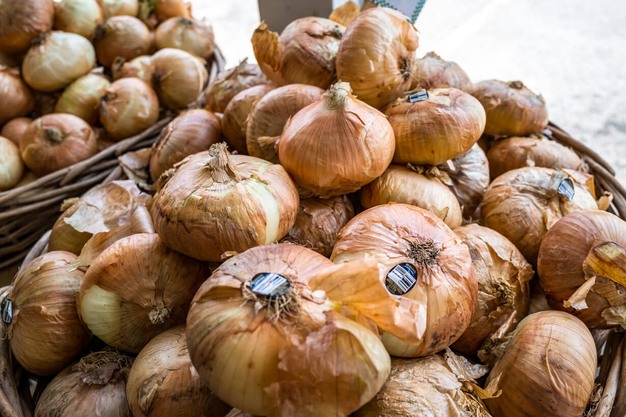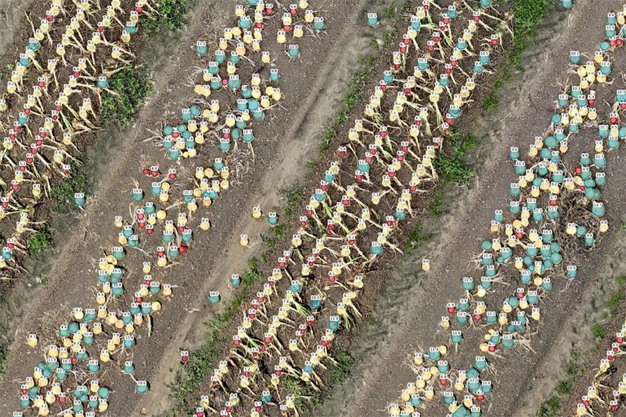The Vidalia onion. Beloved across the country — so much so that it garnered a $200 million farm gate value in 2022 — but only grown in 20 counties surrounding the town of Vidalia in southeast Georgia, where special soil properties produce a sweet onion that is even sweeter.

The conditions that make this region good for growing are also optimal for a wide range of plant pests and diseases. Onion diseases that occur in production fields can cause severe economic losses to onion growers by reducing the yield and quality of marketable onions.
"Georgians are very proud of Vidalia onions. The growers have great success with current management models and technology, but with more innovative technologies, we can make the great even greater," said Luan Oliveira, assistant professor in the Department of Horticulture at the University of Georgia College of Agricultural and Environmental Sciences (CAES).
A multidisciplinary team of UGA researchers aims to enhance the competitiveness of Vidalia onion growers in Georgia by providing them with the ability to confidently detect onion diseases early, enabling them to make management decisions on their crop at a critical time. These abilities, researchers say, should result in increased yield and quality of marketable onions and an overall increase in efficiency and productivity.
"What makes this project especially interesting is the partnership between CAES and the College of Engineering that is fostered through the UGA Institute for Integrative Precision Agriculture, the integrated team — research and Extension faculty, county agents and farmers — and the use of AI to detect onion diseases," said George Vellidis, professor in the CAES Department of Crop and Soil Sciences and institute faculty.
Detecting and identifying diseases creates many challenges for Georgia's Vidalia growers. Farmers and their consultants detect and identify diseases by walking through fields. Because many fields are large, scouting every row is a major efficiency challenge. Producers often scout small areas within a field to save time, but this method leaves most of the field unchecked.

When a disease is detected, sprays — either curative or preventive — are applied to the entire field as a precautionary measure because the extent of disease distribution cannot be easily determined.
Lu and the research team, along with three leading Vidalia sweet onion growers, will apply artificial intelligence and machine learning to create a series of disease management decision support tools (DSTs) for the Vidalia sweet onion.
"Our disease management DSTs will range from smartphone apps to robotic solutions that will enable growers and their consultants to scout entire fields rapidly and target prophylactic and curative sprays to areas in the field where disease may be emerging or has emerged," Lu said.
Growers and their consultants will be able to use the SmartDetect app to identify diseases that can be difficult to pinpoint without specialized knowledge or equipment, including bacterial leaf blight, pink root, or onion smut.
For more information:
Matthew Agvent
CAES Newswire
Tel: +995 7702387216
Email: [email protected]
www.newswire.caes.uga.edu
